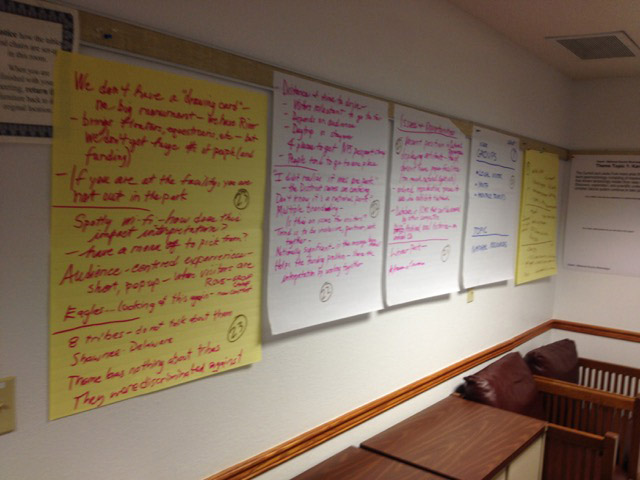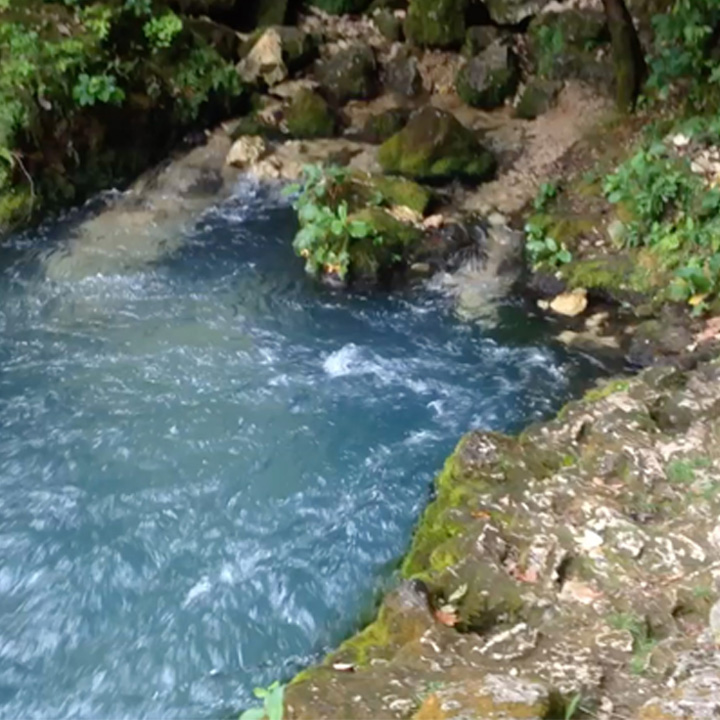Planning interpretation along the Current River in the Ozark National Scenic Riverways
Home to the most significant number of first magnitude springs in the world and the Current River, the Riverways has been a National Park for 53 years. Before that, there were several Missouri State Parks, Big Spring and Round Spring for instance, that had been serving the public since the 1920s. So the karst geology and untouched riparian environment have been a destination for paddlers, hikers, birders, hunters, and spelunkers for almost a century. It was time to see how things stood in the interpretive world, time for a new Park Service Long Range Interpretive Plan!
Our first series of workshops and outreach sessions took place in late August, the season was winding down, but there were still thousands of visitors all along the Riverways on a weekday with a ten-fold increase on the weekend. The interpretive staff of four were challenged to remove themselves from their duties for two days to soul-search the Park Interpretive mission. Even during the scoping site visits the Rangers answered visitor’s questions and gave directions. A ranger’s work never stops.
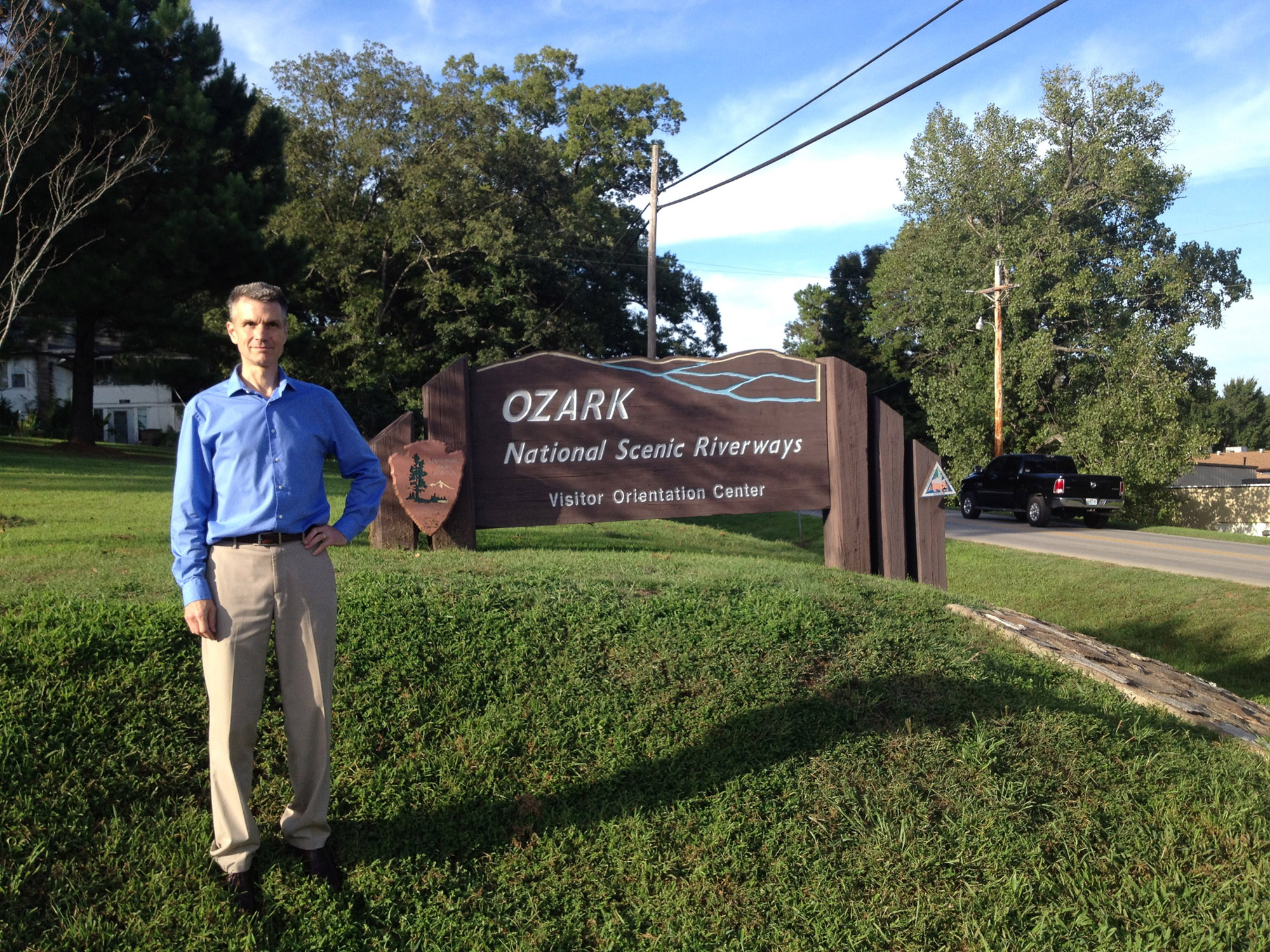
Our tour took us to all the major locations on the upper and lower river and one location on Jacks Fork, site of the Alley Mill, an iconic red building now featured on a commemorative quarter. During our rides in the white NPS van together we learn about the challenges of whiz-bang tourism, how floaters have issues with jet skiers, and they both have problems with horse riders. The constituency is diverse, and one of the most important things these planning projects do it put everyone in the same room. When people are face to face, and not on facebook, they are much more amenable to understanding.
Running a workshop is part showmanship and part storytelling, Faye Goolrick is both of these. Her self-effacing Atlanta manner puts everyone at ease and commands respect. As a designer who is accustomed to creating a consensus for a specific design, workshops like this are opened ended, a catch-all for differing points of view. The strategies that Faye uses are familiar to professional workshop leaders but new to us designers. Everyone might count off and form small groups, discussing “Prioritizing storylines with visitors in mind” or “Issues and influences that impact interpretation” and then reporting back. Other exercises are “What would you do with $100,000?” or “If you had a magic gem with three wishes what would they be?”. By mixing up the seating patterns the college professor might be sitting next to the town of Eminence Museum director, and the representative of the Ozark Equestrian Association might be across from the State Park interpreter of Echo Bluff.
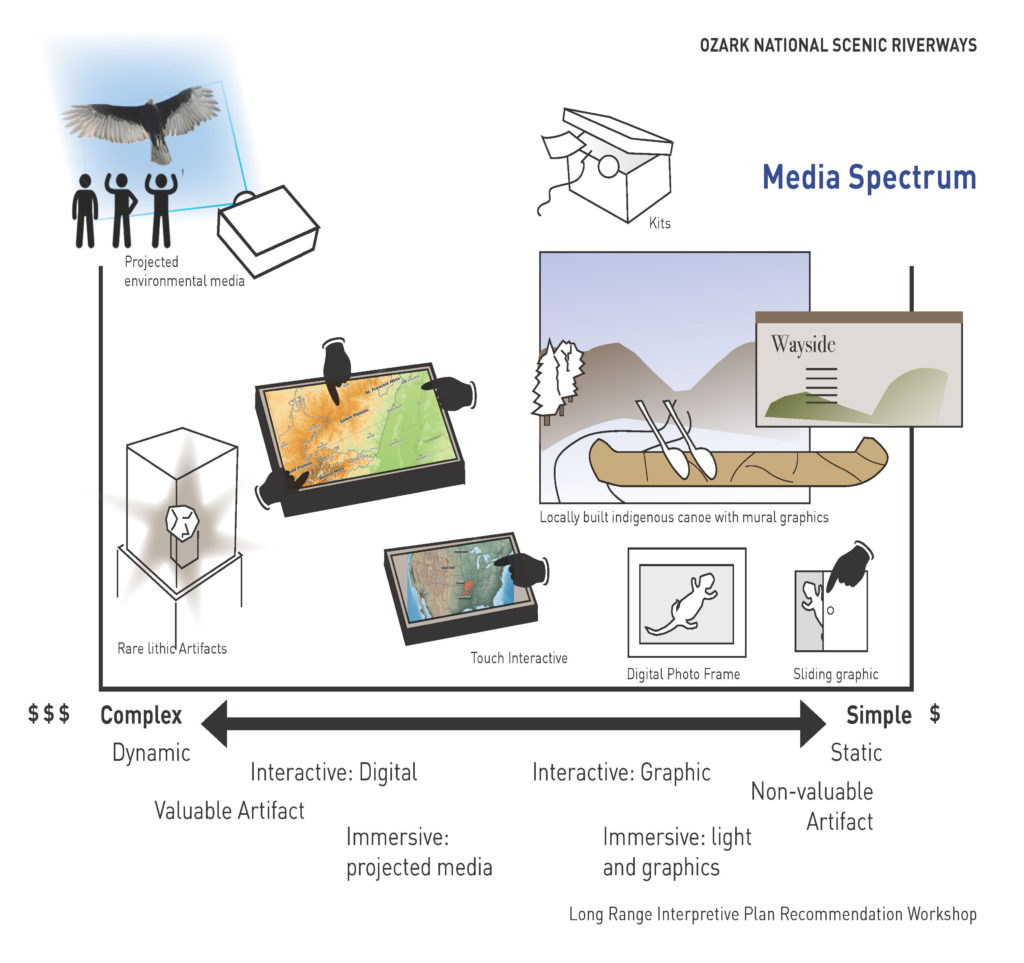
The most contentious issue was media in the parks. Cell signals get sketchy in the Ozark Riverways, and many think that is a good thing. But there is no doubt that millennials consider their smartphone as integral to public life as socks and shoes. It was clear that the room was weighted heavily to the older staff who enjoyed sharing stories of smart-phone gazing hikers walking into trees. The gold standard of interpretation is a knowledgeable ranger, you the visitor, and the scenic wonder at hand. But there are fewer rangers; they cannot be everywhere, cell or hotspot interpretation would be appreciated by many visitors. Wifi at park sites might not impact night-time programs as feared. The oldest participant in the workshop, an esteemed author, and the former ranger had an iPad. Its here, let us take advantage of the various manifestations of new technology, this was the eventual consensus.
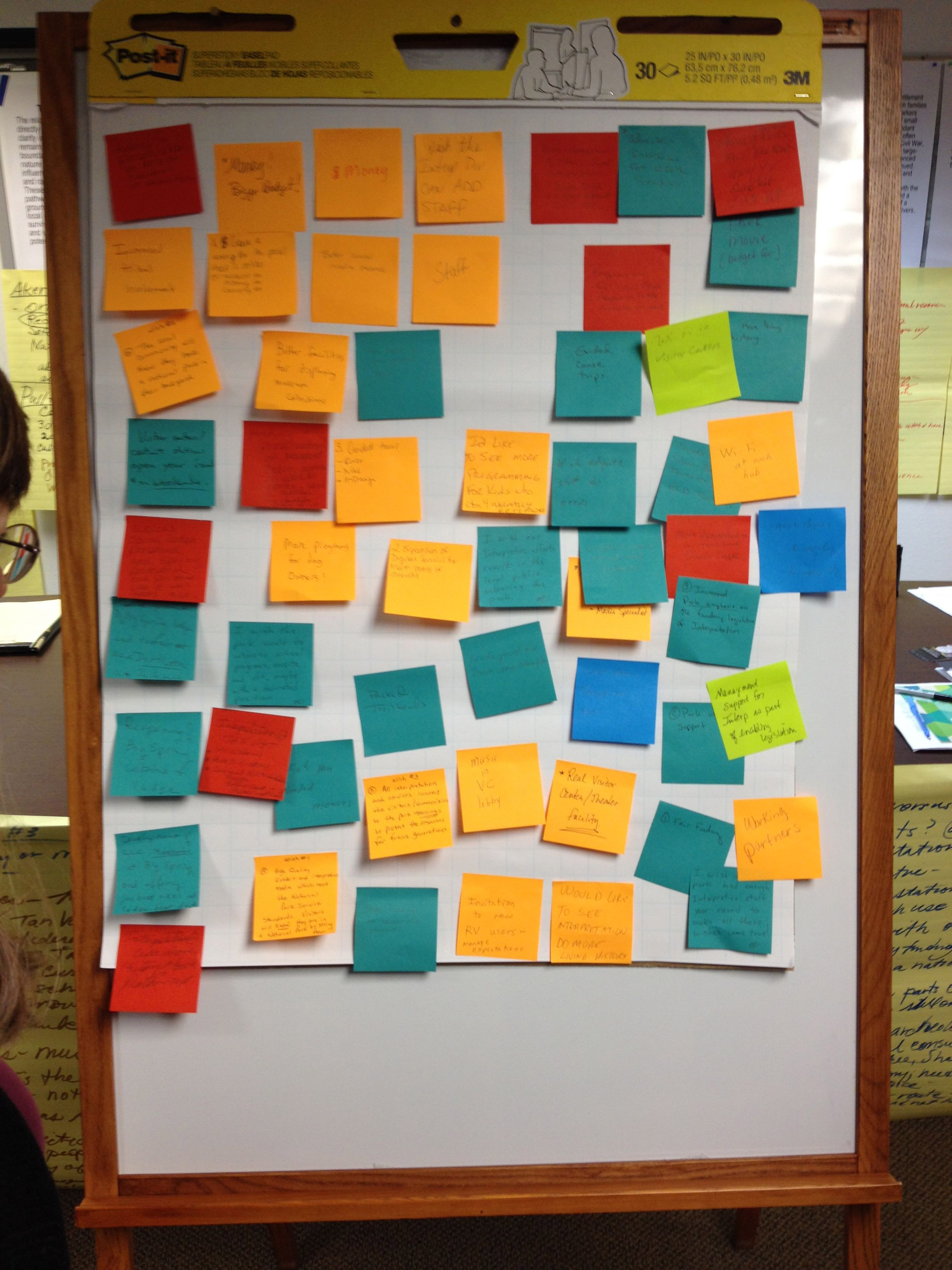
My presentation was on the potential for fixed and portable exhibits at each of the four contact stations and visitor center. It included a chart showing the spectrum of exhibit complexity possible at each location. Followed by examples of all kinds of interpretive tools; kiosks, they need better graphics identity, scenic exhibits, physical and digital interactives, a touch-table. It was a quick taxonomy of the world of exhibits and environmental graphics that was appreciated by the staff. It was followed up by even more blue-sky imagery; the NPS Harpers Ferry representative shared with us the Corning World of Glass video. It features transparent iPad like devices that show dinosaurs on the landscape, advanced plant identification, think Plant-net on steroid, and a host of Minority Report-inspired environmental digital media. This put everyone in the mood for the “100,000 dollars” and “Magic Gem” exercises.
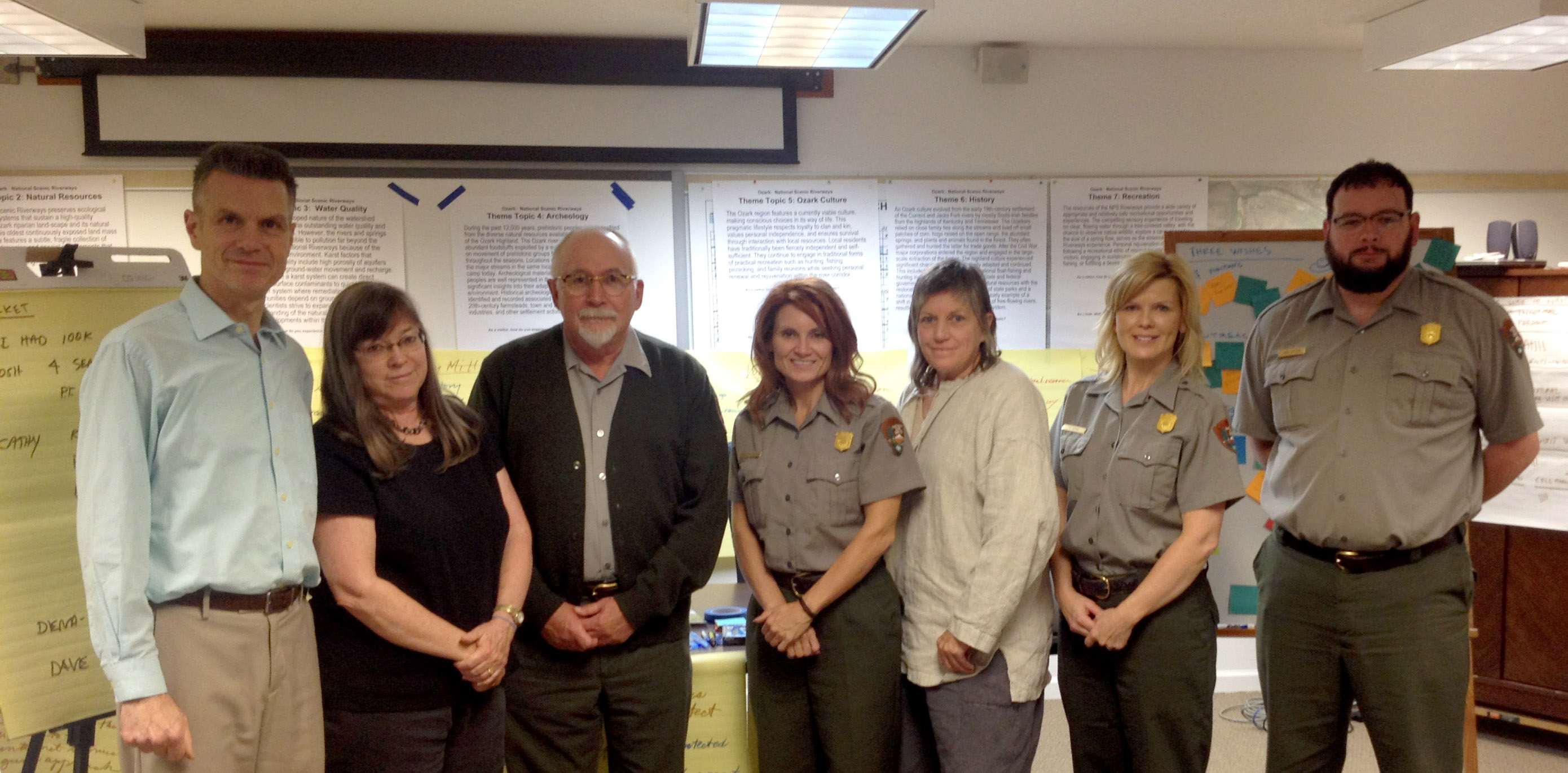
What did the Rangers wish for? More staff, another full-time interpreter, an executive assistant, volunteer liaison/videographer. That is what they would do with their first $100K, its all about the people!
It is now time for Faye and myself to look back on our notes and bring the hundreds of post-it notes, scribed comments, and incidental conversations into a dynamic long-range plan that will point the park in the right interpretive direction for the next 25 years.
